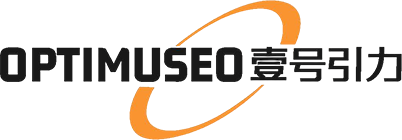Content marketing and SEO (search engine optimization) are two essential components of any successful digital marketing strategy. Content marketing involves creating and distributing valuable, relevant, and consistent content to attract and retain a target audience. This content can take many forms, including blog posts, videos, infographics, and social media posts. The goal of content marketing is to drive profitable customer action by providing valuable information that educates, entertains, or inspires the audience.
On the other hand, SEO is the process of optimizing a website to rank higher in search engine results pages (SERPs). This involves making strategic changes to the website's content, structure, and performance to make it more appealing to search engines like Google. By improving a website's SEO, businesses can increase their visibility and attract more organic traffic from search engines.
Both content marketing and SEO work hand in hand to help businesses achieve their marketing goals. Content marketing provides the valuable content that attracts and engages the audience, while SEO ensures that this content is easily discoverable by search engines. When done effectively, content marketing and SEO can drive significant traffic and leads to a website, ultimately leading to increased sales and revenue.
Creating a Content Marketing Strategy
Creating a successful content marketing strategy requires careful planning and consideration of the target audience, business goals, and available resources. The first step in creating a content marketing strategy is to define the target audience and understand their needs, preferences, and pain points. This will help businesses create content that resonates with their audience and provides value.
Once the target audience is defined, businesses should set clear and measurable goals for their content marketing efforts. These goals could include increasing brand awareness, generating leads, or driving sales. With clear goals in place, businesses can then develop a content plan that outlines the types of content to be created, the topics to be covered, and the channels through which the content will be distributed.
In addition to creating valuable content, businesses should also consider how they will promote and distribute their content to reach their target audience. This may involve leveraging social media, email marketing, influencer partnerships, and other distribution channels to maximize the reach and impact of their content. By creating a comprehensive content marketing strategy, businesses can ensure that their content efforts are aligned with their overall marketing goals and are set up for success.
Optimizing Content for SEO
Optimizing content for SEO is crucial for ensuring that it ranks well in search engine results pages and attracts organic traffic. There are several key factors to consider when optimizing content for SEO, including keyword research, on-page optimization, and technical SEO.
Keyword research is the process of identifying the terms and phrases that people are searching for in relation to a business's products or services. By understanding the keywords that are relevant to their industry, businesses can create content that aligns with what their target audience is searching for. This can help improve the visibility of their content in search engine results pages and attract more organic traffic.
On-page optimization involves making strategic changes to the content itself to make it more appealing to search engines. This includes optimizing title tags, meta descriptions, headers, and body copy to include relevant keywords and provide valuable information to both search engines and users. Additionally, businesses should also consider optimizing their images, URLs, and internal linking structure to further improve their on-page SEO.
Technical SEO involves optimizing the technical aspects of a website to improve its performance in search engine results pages. This includes improving site speed, mobile-friendliness, site architecture, and crawlability to ensure that search engines can easily access and index the website's content. By optimizing content for SEO, businesses can improve their chances of ranking well in search engine results pages and attracting more organic traffic to their website.
Utilizing Keywords and Meta Tags
Keywords and meta tags play a crucial role in helping search engines understand the relevance of a website's content and determining its ranking in search engine results pages. Keywords are the terms and phrases that people use when searching for information online. By including relevant keywords in a website's content, businesses can improve its visibility in search engine results pages and attract more organic traffic.
When utilizing keywords in content, businesses should focus on using relevant keywords that align with their target audience's search intent. This involves conducting thorough keyword research to identify the terms and phrases that are most relevant to their industry and target audience. By strategically incorporating these keywords into their content, businesses can improve its relevance and visibility in search engine results pages.
In addition to using keywords in content, businesses should also pay attention to meta tags, including title tags and meta descriptions. Title tags are HTML elements that specify the title of a web page and appear as the clickable headline in search engine results pages. Meta descriptions are brief summaries of a web page's content that appear below the title tag in search engine results pages. By optimizing these meta tags with relevant keywords and compelling messaging, businesses can improve their click-through rates and attract more organic traffic to their website.
By effectively utilizing keywords and meta tags in their content, businesses can improve their visibility in search engine results pages and attract more organic traffic from users who are actively searching for information related to their products or services.
Building Quality Backlinks
Backlinks are links from other websites that point back to a business's website. They play a crucial role in SEO by signaling to search engines that a website is credible, authoritative, and trustworthy. Building quality backlinks is essential for improving a website's visibility in search engine results pages and attracting more organic traffic.
There are several strategies that businesses can use to build quality backlinks to their website. One effective strategy is creating valuable, shareable content that naturally attracts backlinks from other websites. By creating high-quality blog posts, infographics, videos, or other forms of content that provide value to the target audience, businesses can increase the likelihood of other websites linking back to their content.
Another strategy for building quality backlinks is reaching out to other websites and influencers within their industry to request backlinks. This may involve guest posting on other websites, participating in industry forums or communities, or collaborating with influencers to create valuable content that includes backlinks to their website.
Additionally, businesses can also leverage social media platforms, online directories, and industry associations to build quality backlinks to their website. By actively engaging with these platforms and organizations, businesses can increase their chances of attracting backlinks from reputable sources within their industry.
By building quality backlinks to their website, businesses can improve its authority and credibility in the eyes of search engines, ultimately leading to higher rankings in search engine results pages and increased organic traffic.
Measuring and Analyzing Success
Measuring and analyzing the success of a content marketing strategy is essential for understanding its impact on a business's overall marketing goals. There are several key metrics that businesses should track to measure the success of their content marketing efforts, including website traffic, engagement metrics, lead generation, and sales conversions.
Website traffic is a fundamental metric for measuring the success of a content marketing strategy. By tracking the number of visitors to a website over time, businesses can understand how effectively their content is attracting an audience and driving traffic from various sources such as organic search, social media, email marketing, or referral traffic.
Engagement metrics such as bounce rate, time on page, and pages per session provide insights into how effectively a website's content is engaging its audience. By analyzing these metrics, businesses can understand which pieces of content are resonating with their audience and which may need improvement.
Lead generation is another critical metric for measuring the success of a content marketing strategy. By tracking the number of leads generated from various forms of content such as gated assets or contact forms, businesses can understand how effectively their content is driving potential customers through the sales funnel.
Finally, sales conversions are the ultimate measure of success for a content marketing strategy. By tracking the number of sales or revenue generated from content efforts, businesses can understand how effectively their content is driving tangible business results.
By measuring and analyzing these key metrics, businesses can gain valuable insights into the effectiveness of their content marketing efforts and make data-driven decisions to optimize their strategy for better results.
Staying Updated with SEO Trends and Algorithms
Staying updated with SEO trends and algorithms is crucial for ensuring that a business's website remains competitive in search engine results pages. Search engines like Google frequently update their algorithms to improve the quality of search results for users. By staying informed about these updates and adapting their SEO strategies accordingly, businesses can maintain or improve their rankings in search engine results pages.
One way to stay updated with SEO trends and algorithms is by following reputable industry publications, blogs, forums, and social media accounts that regularly share insights about SEO best practices and algorithm updates. By staying informed about the latest trends and changes in the SEO landscape, businesses can adapt their strategies proactively to remain competitive.
Additionally, businesses should also consider participating in industry events such as conferences or webinars where experts share insights about SEO best practices and trends. These events provide valuable opportunities for networking with other professionals in the industry and gaining insights into emerging trends that may impact SEO strategies.
Furthermore, businesses should also consider leveraging SEO tools and analytics platforms that provide insights into website performance and visibility in search engine results pages. By regularly monitoring these tools and analyzing key performance indicators such as keyword rankings, organic traffic trends, and backlink profiles, businesses can gain valuable insights into how well their website is performing in search engines.
By staying updated with SEO trends and algorithms, businesses can adapt their strategies proactively to remain competitive in search engine results pages and attract more organic traffic to their website. This ongoing commitment to staying informed about SEO best practices will ultimately help businesses achieve long-term success in their digital marketing efforts.



